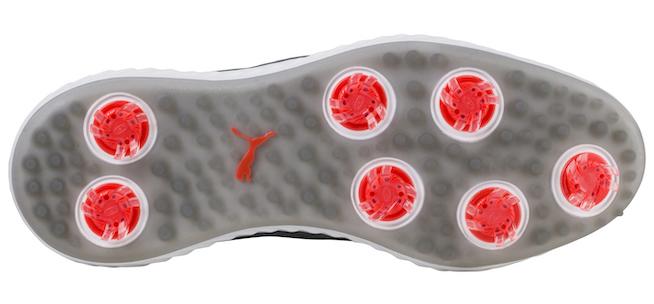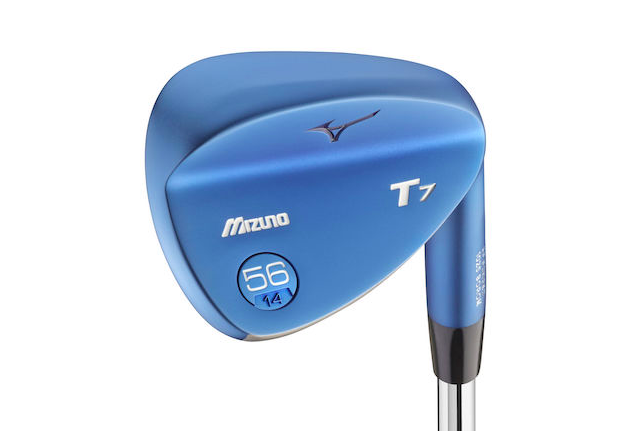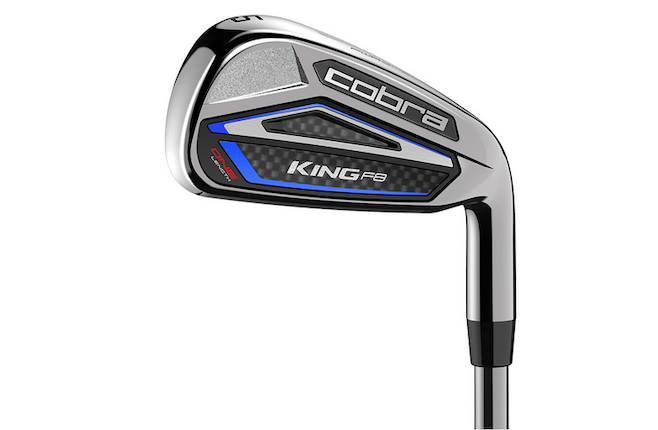On every Irish golf journey, I take a few new items or try new things -- last year it was a golf clubs shipping service -- that will hopefully alter my life forever and bring world peace or at least improve my chipping skills.
I view golf shoes like I would a mattress or couch. Within reason, buy the best quality, the highest comfort, because you're going to be spending countless hours with them doing something (golf, sleep, watching "Veep") that makes life worth living.
I've always been thrilled with my Ecco golf shoes, but I'm newly smitten with Puma's golf line because they have brilliantly decided that some of us have wide feet. I don't have paddles for feet, just one size up from the medium masses, but trying to find a properly-fitting shoe in golf -- basketball is far worse -- has not been easy. Until now.
Andrew Lawson, footwear product line manager at Puma Golf, tells me that "it costs a pretty penny" to make a wide shoe because a new "last," or the foot-shaped form upon which the shoe is designed, must be created. Puma only does this in a few styles and wide golf shoes only make up about 8 percent of its U.S. market, but understandably they're very popular with people who are tired of hurting their feet with ill-fitting shoes.

Puma's Ignite PWRADAPT shoes were, in fact, comfortable from the very first round, due to the flexible mesh uppers, but they remained stable and firm in every kind of wet and dry stance I took in Ireland. Have no fear that they'll turn into floppy Chucks after a few rounds. They look stylish and athletic and provide great traction with seven traditional Tour Lock soft spikes -- compatible with some Softspikes, Champ and Tri-LOK -- and over 100 knobby "lugs" on the outer sole.
The PWRADAPT carries a one-year waterproof guarantee. Two would be nice.
I'm not sure why any golf shoe sold today would not be waterproof. We do play outside. But, seriously, you must have waterproof shoes to play golf in Ireland or the UK. Rain is a normal occurrence. Gale-force rain is another matter. No shoe protects you from rain rolling down your ankles, but the Pumas held up admirably in the routine Irish showers. One important note that even Puma acknowledges, the PWRADAPT runs about a half-size large, so order accordingly.
I needed a new driver.
Cobra's King F8 driver, introduced last year, came recommended to me by a very good college player who, Tiger-like, can feel a gram or two of weight differential configured across the dual-face axis of bifurcated biomass hummah-duh-hummah-duh.

I am not that person. I understand low and high rates of spin, how shafts can accentuate what you do well (or vice versa) and maybe how thinner faces are helping pros send balls to heretofore unknown distances, but beyond that, it sounds like the Space Program.
The F8 has quickly become a favorite. Cobra says it is designed for players who have moderate swing speeds and that it is more forgiving. I certainly tested its forgiveness in Ireland's seaside crosswinds. Adjusted for a slight draw at a loft of 10.5 degrees, with a stiff Aldila shaft, the F8 powered consistent lower-trajectory drives that were perfect for the wind-battered links. It seemed to neutralize, but certainly not rescue, some off-center swipes, which is fine by me. Rather that we have better swings than too much technology.
Cobra's new milled face process reportedly produces a face that is three percent thinner and 10 percent lighter than before, which might explain a 347-yard downhill drive that I no doubt accidentally hit on a normal day with my F8 at El Paso's wondrous Butterfield Trail Golf Club upon returning from Ireland. That was a total one-off, but just seeing that the F8 was capable of that with maybe a 105 mph swing speed was chest-pumping joy.
I've played forged Mizuno irons for 20 years, but influenced by tour pro chatter, I thought my wedges should just naturally be Cleveland or Titleist. There's no denying they make wonderful wedges, but when I brought along the Mizuno T7's to Irish courses like Lahinch and Ballybunion, where precise wedge play is required, it felt good to have a united set of clubs.

The Quad Cut grooves, boron-infused steel and solid blade look of the forged 52, 56 and 60 degree T7's give good ball-strikers that unmistakable feel of confidence that is perhaps more important in wedges than with any other club in the game. By that I mean you can often survive a thinned-but-straight 7-iron; not so a clangy skulled wedge.
The T7's make a flush strike feel like shutting the door of a Ferrari. I just wish I could feel that sensation more often. If someone who had never played golf could feel the vibration-free power of a forged wedge of this quality they would probably agree that it feels like a well-built tool expertly doing its job. My only qualm with the T7's is that to make them look sleek and elegant, Mizuno took the loft numbers off the sole. While you can see the difference in the clubs when they're side-by-side, it's not immediate, and having the numbers elegantly chiseled into the sole makes sense.
Bryson DeChambeau's slightly unorthodox swing and Cobra's King F8 ONE-Length irons produced four wins in 2018 for the former Southern Methodist University physics major, suggesting again that there may be a different method out there just waiting to become the Fosbury Flop of golf.

Like the reclusive and brilliant former Canadian golf legend, Moe Norman, who won over 50 tournaments and had 13 holes-in-one with a self-taught single-plane swing, DeChambeau has fashioned a similar swing in which the arms are nearly flat and lifted away from the body. Combined with same-length irons – they're all 37.5 inches, about a 7-iron length – and tennis-racket-thick grips held more in the palms than fingers, DeChambeau uses a more fluid and upright swing than Norman. He may never attain Norman's incredible accuracy, but DeChambeau has quickly become known as a consistent ball-striker and a disciplined creative thinker about the game. The clubheads are also all identical weights; the lie angles are all identical and about 10-degrees more upright than typical.
I took the plunge and played with the F8 ONE-Lengths for a week and found the length issue less of a worry than I had expected. Yes, it feels strange to be poised over a pitching wedge that's the length of a 7-iron, but if you trust the lofts the transition would not be a major obstacle. I never fully converted to DeChambeau's single-plane swing, however, so I may be limiting the perceived performance of the irons. Even so, I really liked the ONE-Lengths and hit some surprisingly good shots, moreso with my 5-iron, a club that has often confounded me in traditional sets and which in the F8's has been engineered to achieve a higher launch angle. The shorter clubs are stiffer and have a lower launch angle.
As with the Natural Golf swing method that grew out of Norman's unique understanding of ball-striking -- he was autistic and could feel club performance and physics better than most -- the success of Cobra's same-length clubs may be tied to the golfer's devotion in altering their swing. Fortunately, they have in DeChambeau an engaging young champion who may just be able to develop an audience for those contrarians out there who insist that there's got to be a more efficient way to hit a golf ball.
Related: Any Golf Vacation To Southwest Ireland Needs To Include Ballybunion
-- Bruce Selcraig is a former staff writer with Sports Illustrated whose work has appeared in The New York Times Magazine, Harper's and The Atlantic, among others. Contact him at selcraig@swbell.net.





